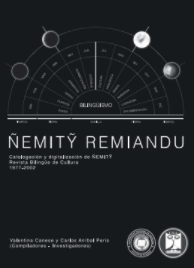Oral L2 comprehensibility among English immersion learners when giving school speeches
Palabras clave:
Oral L2, English Immersion, School SpeechesResumen
This quantitative study examines the second language (L2) oral comprehensibility of 30English immersion learners, 15 girls and 15 boys, at an international school in South America (ISSA). At the end of 12th grade, these predominantly first language (L1) Spanish speakers gave speeches in English to a school audience. These speeches were recorded, and two audio extracts per student were selected. Native speakers of English listened to theses amples and rated them based on their own perceptions of each student‘s oral comprehensibility, i.e., ease of understanding (Derwing& Munro, 2005; Munro & Derwing, 2015). Female students received significantly higher comprehensibility scores than did male students. Students who had transferred to ISSA from other schools also tended to receive higher comprehensibility scores than those who had been schoole dat ISSA since kindergarten. The current study extends the field of comprehensibility research to the population of immersion learner sand to the curriculum component of school speeches as well as to the relationship between rater-perceived L2 comprehensibility and each student‘s gender and schooling. This study has direct implications for L2 instruction, assessment, and research.
Referencias
Abello-Contesse, C., Chandler, P. M., Lopez-Jimenez, M.D., & Chacon-Beltran, R. (Eds.). (2013). Bilingual and multilingual education in the 21st century. Bristol, UK: Multilingual Matters.
Aron, A., Aron, E., &Coups, E. (2005). Statistics for the behavioral and social sciences: A brief course, 3rd ed. Upper Saddle River, NJ: Pearson Prentice-Hall.
Baker, C., &Jones, S. (1998). Encyclopedia of bilingualism and bilingual education. Clevedon, UK: Multilingual Matters.
Bergeron, A., &Trofimovich, P. (2017). Linguistic dimensions of accentedness and comprehensibility: Exploring task and listener effects in second language French. Foreign Language Annals, 50(3), 547-566.
Brantmeier, C., Schueller, J., Wilde, J., &Kinginger, C. (2007). Gender equity in foreign and second language learning. In S. S. Klein (Ed.), Handbook for achieving gender equity through education, (pp. 305-334). New York, NY: Routledge.
Brown, H. D. (2006). Principles of language learning and teaching, 5th ed. White Plains, NY: Pearson-Longman.
Carder, M. (2007). Bilingualism in international schools. Clevedon, UK: Multilingual Matters.
Cloud, N., Genesee, F., &Hamayan, E. (2000). Dual language instruction: A handbook for enriched education. Boston, MA: Heinle&Heinle.
Crowther, D., Trofimovich, P., &Issacs, T. (2016). Linguistic dimensions of second language accent and comprehensibility? Journal of Second Language Pronunciation, (2), 160-182.
Crowther, D., Trofimovich, P., Saito, K., &Issacs, T. (2015). Second language comprehensibility revisited: Investigating the effects of learner background? TESOL Quarterly, 49, 814-837
Derwing, T., & Munro, M. (2010, March). L2 pronunciation and fluency development: A 7-year longitudinal study. Paper presented at the American Association for Applied Linguistics conference, Atlanta, GA.
Derwing, T., Munro, M., &Thomson, R. (2008). A longitudinal study of ESL learners‘ fluency and comprehensibility development. Applied Linguistics, 29(3), 359-380.
Derwing, T., Rossiter, M., Munro, M., &Thomson, R. (2004). Second language fluency: Judgments on different tasks. Language Learning, 54(4), 655– 679.
Derwing, T., Thomson, R.I, & Munro, M. (2006). English pronunciation and fluency development in Mandarin and Slavic speakers. System, 34, 183- 193.
Eckert, P., &McConnell-Ginet, S. (2003). Language and gender. Cambridge, UK: Cambridge University Press.
Ellis, R. (1994). The study of second language acquisition. Oxford, UK: Oxford University Press.
Gass, S., Sorace, A., &Selinker, L. (1999). Second language learning data analysis, 2nd ed. Mahwah, NJ: Erlbaum.
Giles, H., &Coupland, N. (1991). Language: Contexts and consequences. Keynes, UK: Open University Press.
Green, J., & Oxford, R. (1995). A closer look at learning strategies, L2 proficiency, and gender. TESOL Quarterly, 29(2), 261-297.
Gumperz, J. (1992). Contextualization and understanding. In A. Duranti& C. Goodwin (Eds.), Rethinking context (pp. 229–252). Cambridge, UK: Cambridge University Press.
Hatch, E., &Lazaraton, A. (1991). The research manual: Design and statistics for applied linguistics. New York, NY: Newbury House.
Hayden, M., Levy, J., & Thompson, J. (2015). The SAGE handbook of research in international education (2nded.). Los Angeles, CA: SAGE.
Hayes-Harb, R., & Hacking, J. (2015). What do listeners believe underlies their accentedness judgments? Journal of Second Language Pronunciation, 1 (1), 43-64.
Issacs, T., & Trofimovich, P. (2012). Deconstructing comprehensibility: Identifying the linguistic influences on listeners‘ L2 comprehensibility ratings. Studies in Second Language Acquisition, 34, 475-505.
Johnson, R. K., & Swain, M. (1997). Immersion education: International perspectives. New York, NY: Cambridge University Press.
Jun, H. G., & Li, J. (2010). Factors in raters‘ perceptions of comprehensibility and accentedness. In J. Levis & K. LeVelle (Eds.), Proceedings of the 1st Pronunciation in Second Language Learning and Teaching Conference, Iowa State University. Sept. 2009. (pp. 53-66). Ames, IA: Iowa State University.
Kachru, B., & Nelson, C. (1996). World Englishes. In S. McKay & N. Hornberger (Eds.), Sociolinguistics and language teaching, (pp. 71-102). Cambridge, UK: Cambridge University Press.
Kennedy, S., &Trofimovich, P. (2008). Intelligibility, comprehensibility, and accentedness of L2 speech: The role of listener experience and semantic context. Canadian Modern Language Review, 64(3), 459-489.
Krashen, S., &Terrell, T. (1983). The natural approach: Language acquisition in the classroom. Hayward, CA: Alemany Press.
Labov, W. (1970). The study of nonstandard English. Urbana, IL: National Council of Teachers of English.
Levis, J. M. (2018). Precision and imprecision in second language pronunciation. Journal of Second Language Pronunciation, 4(1), 1-10.
Lyster, R. (1999). Immersion. In B. Spolsky (Ed.), Concise encyclopedia of educational linguistics, (pp. 626-632). Amsterdam, NL: Elsevier.
Major, R. (2004). Gender and stylistic variation in second language phonology. Language Variation and Change, 16(3), 169-188.
Major, R., Fitzmaurice, S., Bunta. F., &Balasubramanian, C. (2002). The effects of nonnative accents on listening comprehension: Implications for ESL assessments. TESOL Quarterly, 36(2), 173-190.
Motallebzadeh, K., &Nematizadeh, S. (2011). Does gender play a role in the assessment of oral proficiency? English Language Teaching, 4(4), 165- 172.
Mougeon, R., & Rehner, K. (2001). Acquisition of sociolinguistic variants by French immersion students: The case of restrictive expressions, and more. Modern Language Journal, 85(3), 398-415.
Moyer, A. (2010, March). Do gender differences in L2 accent really exist? Paper presented at the American Association of Applied Linguistics conference, Atlanta, GA.
Munro, M., &Derwing, T. (1995). Foreign accent, comprehensibility, and intelligibility in the speech of second language learners. Language Learning,45(1), 73-97.
Munro, M., &Derwing, T. (2001). Modeling perceptions of the accentedness and comprehensibility of L2 speech: The role of speaking rate. Studies in Second Language Acquisition, 23(4), 451-468.
Munro, M., & Derwing, T. (2015). A prospectus for pronunciation research in the 21st century. Journal of Second Language Pronunciation, 1(1), 11-42.
Munro, M., Derwing, T., & Morton, S. (2006). The mutual intelligibility of L2 speech. Studies in Second Language Acquisition, 28(1), 111-131.
Munro, M., & Mann, V. (2005). Age of immersion as predictor of foreign accent. Applied Psycholinguistics, 26, 311-341.
Norton, B. (1997). Language, identity, and the ownership of English. TESOL Quarterly 31(3), 409-430.
Norton, B., &Pavlenko, A. (2004). Addressing gender in the ESL/EFL classroom. TESOL Quarterly 38(3), 504-513.
O‘Brien, M.G. (2014). L2 learners‘ assessments of accentedness, fluency, and comprehensibility of native and nonnative German speech. Language Learning, 11, 715-748.
Oxford, R. L. (1995). Gender differences in language learning styles: What do they mean? In J. M. Reid (Ed.), Learning styles in the ESL/EFL classroom (pp. 34-46). Boston, MA: Heinle&Heinle.
Oxford, R. L. (Ed.). (1996). Language learning strategies around the world: Crosscultural perspectives. Manoa, HI: University of Hawaii Press.
Parlak, O. (2010, March). Does pronunciation instruction promote intelligibility and comprehensibility? Paper presented at the Teachers of English to Speakers of Other Languages conference, Boston, MA.
Pavlenko, A. (2008). Research methods in the study of gender in second/foreign language education. In K. A. King & N. H. Hornberger (Eds.), Encyclopedia of languageand education: Vol. 10. Research methods in language education (2nd ed., pp. 165-174). New York, NY: Spring Science+Business Media LLC.
Pennington, M. (1996). Phonology in English language teaching. London, UK: Longman.
Pickering, L. (2006). Current research on intelligibility in English as a lingua franca. Annual Review of Applied Linguistics 26, 219-233.
Potowski, K. (2007). Language and identity in a dual immersion school. Clevedon, UK: Multilingual Matters.
Rajadurai, J. (2007). Intelligibility studies: A consideration of empirical and ideological issues. World Englishes 26(1), 87-98.
Saito, K., &Shintani, N. (2016). Do native speakers of North American and Singapore English differentially perceive comprehensibility in second language speech? TESOL Quarterly, 11, 421-446.
Saito, K., Trofimovich, P., &Issacs, T. (2016). Second language speech production: Investigating linguistic correlates of comprehensibility and accentedness for learners at different ability levels. Applied Psycholinguistics, 37(11),217 - 240.
Schneider, F. W., Gruman, J. A., & Coutts, L. M. (Eds.). (2005). Applied social psychology: Understanding and addressing social and practical problems. Thousand Oaks, CA: Sage.
Smith, L., & Bisazza, J. (1982). The comprehensibility of three varieties of English for college students in seven countries. Language Learning 32(2), 259- 269.
Southwood, M. H., & Flege, J. (1999). Scaling foreign accent: Direct magnitude estimation versus interval scaling. Clinical Linguistics and Phonetics 13(5), 335-349.
Spezzini, S. (2004). English immersion in Paraguay: Individual and sociocultural dimensions of language learning and use. International Journal of Bilingual Education and Bilingualism, 7(5), 412-431.
Spezzini, S., Barratt, L., & Carter, D. (2018). Pronunciation assessment. In C. Coombe (Ed.), Assessment and evaluation, Volume 8 (pp. 5174-5180), in J. I. Liontas(Editor-in-Chief), The TESOL Encyclopedia of English Language Teaching. Hoboken, NJ: John Wiley & Sons, Inc.
Spezzini, S., & Oxford, R. (2003, March). Immersion L2 usage: Issues of identity, gender, and ethnicity. Paper presented at the American Association for Applied Linguistics conference. Arlington, VA.
Strachan, L., Kennedy, S., &Trofimovich, P. (2019, March 14). Second language speakers‘ awareness of their own comprehensibility. Journal of Second Language Pronunciation. John Benjamins Publishing Company. E-issn 2215-194x.
Swain, M. (1985). Communicative competence: Some roles of comprehensible input and comprehensible output in its development. In S. Gass & C.Maden (Eds.), Input in second language acquisition (pp. 235-256). Rowley, MA: Newbury House.
Swain, M., &Johnson, R. (1997). Immersion education: A category within bilingual education. In R. Johnson & M. Swain (Eds.), Immersion education: International perspectives, 1-16. New York, NY: Cambridge University Press.
Swann, J. (1999). Gender and language. In B. Spolsky (Ed.), Concise encyclopedia of educational linguistics (pp. 200-202). Amsterdam, NL: Elsevier.
Tannen, D. (1990). You just don’t understand: Men and women in conversation. New York, NY: Morrow.
Tarone, E., &Swain, M. (1995). A sociolinguistic perspective on second language use in immersion classrooms. Modern Language Journal, 79(2), 166-178.
Trudgill, P. (2000). Sociolinguistics: An introduction to language and society, 4th ed. London, UK: Penguin Books.
Van der Slik, F.W.P., Van Hout, R. W. N. M., & Schepens, J. J. (2015). The gender gap in second language acquisition: Gender differences in the acquisition of Dutch among immigrants from 88 countries with 49 mother tongues. PLoS ONE, 10(11), 1-22.
Varonis, E., &Gass, S. (1982). The comprehensibility of nonnative speech. Studies in Second Language Acquisition, 4(2), 114-136.
Winke, P., & Gass, S. (2013). The influence of second language experience and accent familiarity on oral proficiency rating: A qualitative investigation. TESOL Quarterly, 47(4), 762-789.
Zhu, X. (2009). Gender dynamics in peer interaction and their influence on second language learning in the English-as-a-second language classroom. (Unpublished doctoral dissertation). University of South Florida, Tampa, FL.










